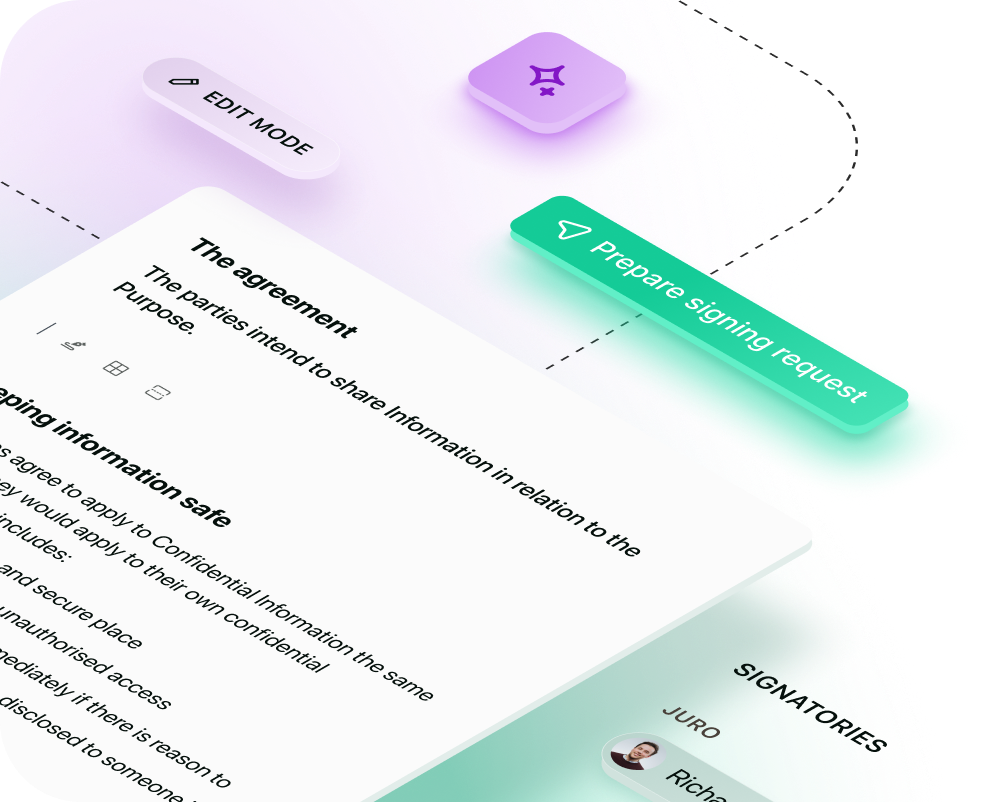Solutions
Customer Support
Resources
Looking to rent out your equipment to other businesses? Use this free equipment lease agreement template to help you formalize the transaction.




It's not always wise or cost-efficient for businesses to buy equipment outright. Fortunately, it's possible for them to lease the equipment instead.
Find out how this process works and how to finalize the terms of the arrangement in this guide to equipment lease agreements.
We've even got a free equipment lease agreement template for you to use as a starting point.
An equipment lease agreement is a legal contract between a lessor (the equipment owner or provider) and a lessee (the person or business using the equipment) that outlines the terms and conditions for leasing and using the specified equipment.
Under an equipment lease agreement, the lessee is granted access and use of a piece of equipment for a certain amount of time. This is offered in exchange for regular lease payments, or a one-off payment.
Also known as an equipment hire agreement, this legal document serves as the foundation for this relationship, outlining details such as how long the equipment will be rented, the cost of rent, and the responsibilities of each party.
The main purpose of an Equipment Lease Agreement is to provide clarity and protection for both parties. It helps to ensure that the lessor and lessee both know their roles and responsibilities.
It's a roadmap of sorts, guiding the lease relationship and defining how potential issues will be resolved. It also specifies what happens at the end of the lease term - whether the equipment will be returned or purchased.
.avif)
Usually, the Lessor, or their agent, is responsible for creating and managing the Equipment Lease Agreement.
However, the Lessee also plays an important role in this process. Both parties must understand and agree to the terms laid out in the agreement. To do this, they'll often need to negotiate the terms and establish ones that are mutually beneficial.
It's also important for the Lessee to seek legal advice to ensure they fully understand their obligations and rights under the agreement.
An Equipment Lease Agreement generally includes:

In a traditional contract workflow, Equipment Lease Agreements are drafted, reviewed by all parties involved, signed, and then filed for future reference.
But the process isn't always smooth sailing.
Managing Equipment Lease Agreements through a traditional, manual workflow often involves a series of tools and processes that can prove time-consuming, error-prone, and inefficient.
This is the first step and often involves using word processors or text editors. The Lessor or their legal team must manually input all the terms and conditions, which can be a tedious process, especially if dealing with multiple leases simultaneously.
Once the agreement is drafted, it's reviewed by multiple parties, including the Lessor, Lessee, and potentially legal advisors. This process is often conducted via email or printed documents, making tracking changes and consolidating feedback a complex and chaotic task.
In a traditional workflow, collecting signatures might require printing the agreement, physically signing it, and then scanning the signed document. This is time-consuming and delays the finalization of the agreement.
Once signed, the agreement must be physically or digitally stored. Physical storage requires space and can make retrieval difficult. Digital storage, such as saving files on a computer or server, may lead to disorganized file naming and folders, making specific agreements hard to find when needed.
Regular checks are necessary to ensure both parties adhere to the agreement terms. In a manual system, this often requires setting reminders, conducting reviews, and potentially dealing with disputes or issues, which can be stressful and time-consuming.
As the equipment lease end date approaches, a new agreement or extension must be drafted, reviewed, signed, and stored, repeating the entire process.
All these steps require significant manual effort, making the process prone to human error and miscommunication. The administrative burden can lead to delays, inefficiencies, and increased costs.
An equipment lease agreement template can significantly streamline the process. Instead of drafting each agreement from scratch, leasing teams can use a pre-approved template and simply fill in the specific details.
This not only saves time but also facilitates consistent terms and conditions across lease agreements throughout the organization.
Automating an Equipment Lease Agreement can transform the way you manage your leases, making the process more efficient, reliable, and user-friendly.
This can be achieved by using a contract management platform like Juro. Here's how it works:
With automation, you can create standardized templates for your Equipment Lease Agreements. These templates can be customized to suit your unique needs, ensuring all essential elements are included.
The review process becomes a breeze with automation. Parties can collaborate in real-time, directly within the document. This feature minimizes back-and-forth, reduces the risk of miscommunication, and ensures everyone is on the same page.
.avif)
No more printing, signing, scanning, and emailing. With eSignature capabilities, parties can securely sign the agreement digitally, from anywhere in the world.
This accelerates the finalization process and makes it more convenient for everyone involved.
Juro also provides a centralized place to store all your agreements, including equipment lease contracts. All contracts created in Juro are stored in the contract repository automatically, providing easy access and retrieval whenever needed.
Juro's contract analytics functionality give you full visibility into your equipment lease contracts. You can also set reminders for key dates and obligations, ensuring you never miss an important deadline again.
.avif)
Juro’s AI contract collaboration platform enables your team to create, execute and manage contracts 10x faster than traditional tools. With Juro, you can:
To join the 6000+ companies already using Juro to power their contracts and reduce routine admin work, hit the button below.
Juro is the #1-rated contract platform globally for speed of implementation.


Juro embeds contracting in the tools business teams use every day, so they can agree and manage contracts end-to-end - while legal stays in control.
Book your demo